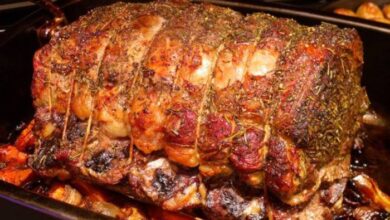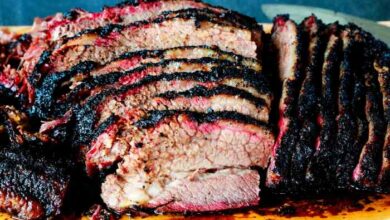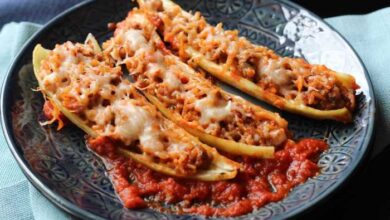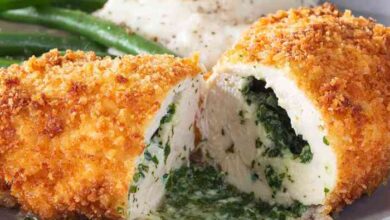
Medium Rare Prime Rib Temperature: The Perfect Guide
Medium rare prime rib temperature is the key to achieving that perfect balance of tenderness and flavor. It’s a culinary art form that requires a delicate touch and an understanding of how temperature affects the meat’s texture and taste. Whether you’re a seasoned chef or a home cook eager to impress, this guide will walk you through the intricacies of achieving the ideal medium rare prime rib, from understanding the doneness range to mastering the art of cooking and serving.
The ideal internal temperature for medium rare prime rib is between 130°F and 135°F. At this temperature, the meat will be juicy, tender, and have a beautiful pink center. However, reaching this temperature is not just about setting the oven or grill to a specific heat.
It’s about understanding the factors that influence cooking time and temperature, such as the size and thickness of the roast, the type of oven, and the ambient temperature. This guide will delve into these factors and provide tips and tricks for achieving the perfect medium rare prime rib every time.
Understanding Medium-Rare Prime Rib: Medium Rare Prime Rib Temperature

Prime rib, a culinary masterpiece, is a cut of beef that is roasted to perfection, yielding a succulent and flavorful dish. Medium-rare prime rib is particularly prized for its tender texture and juicy flavor, a result of careful cooking to achieve the ideal internal temperature.
Characteristics of Medium-Rare Prime Rib
The characteristics of medium-rare prime rib are easily recognizable. The color of the meat is a vibrant reddish-pink, with a hint of brown at the edges. The texture is tender and slightly springy, with juices flowing freely when sliced.
Ideal Doneness Range for Medium-Rare Prime Rib
The ideal doneness range for medium-rare prime rib is between 130°F and 135°F (54.4°C and 57.2°C). This range ensures that the meat is cooked through but still retains its juicy, tender texture.
Importance of Achieving the Correct Internal Temperature
Achieving the correct internal temperature is crucial for optimal flavor and tenderness. Overcooked prime rib can become dry and tough, while undercooked prime rib may be unsafe to eat.
Using a meat thermometer to monitor the internal temperature is essential for ensuring that the prime rib is cooked to the desired doneness.
Temperature Measurement Methods
Getting the internal temperature of your prime rib right is crucial for achieving that perfect medium-rare doneness. To ensure accuracy, it’s essential to understand the different methods of temperature measurement and their respective advantages and disadvantages.
Meat Thermometer
A meat thermometer is a simple and affordable tool that is commonly used to measure the internal temperature of meat. It typically consists of a probe that is inserted into the thickest part of the meat and a dial or digital display that shows the temperature.
- Advantages: Meat thermometers are relatively inexpensive, easy to use, and readily available. They provide a reliable measurement of the internal temperature of the meat.
- Disadvantages: Some meat thermometers can be inaccurate, especially if they are not calibrated properly. Additionally, they may not be suitable for measuring the temperature of very thick cuts of meat, as the probe may not reach the center.
Digital Probe
A digital probe is a more advanced type of meat thermometer that uses a digital sensor to measure the internal temperature of the meat. It typically has a long probe that can be inserted into the meat and a digital display that shows the temperature.
Some digital probes also have a timer function that can be used to set a target temperature.
Getting that perfect medium rare prime rib is all about timing and temperature, and I’ve found that a little extra time spent checking the internal temperature with a meat thermometer is worth it. Of course, you can’t talk about temperature without thinking about the deliciousness of a Greek pasta salad, which is perfect for a summer cookout, especially if you’re serving that prime rib.
I’m always looking for new ways to serve Greek pasta salad, and this recipe from Cerita Kuliner is a real winner. And once you’ve mastered the art of the perfect prime rib, you can move on to mastering the art of the perfect Greek pasta salad.
- Advantages: Digital probes are more accurate than traditional meat thermometers and can be used to measure the temperature of very thick cuts of meat. They also often have additional features, such as a timer function, that can be helpful for cooking.
- Disadvantages: Digital probes can be more expensive than traditional meat thermometers. They may also require batteries, which can be inconvenient.
Instant-Read Thermometer
An instant-read thermometer is a handheld device that can quickly measure the internal temperature of meat. It typically has a probe that is inserted into the meat and a digital display that shows the temperature. Instant-read thermometers are ideal for quickly checking the temperature of meat during cooking.
- Advantages: Instant-read thermometers are very quick and easy to use. They are also very affordable and readily available.
- Disadvantages: Instant-read thermometers can be less accurate than other types of thermometers, especially if they are not used properly. They are also not suitable for measuring the temperature of very thick cuts of meat, as the probe may not reach the center.
Prime Rib Cooking Techniques
Prime rib, a culinary masterpiece, requires precise cooking techniques to achieve the coveted medium-rare doneness. This involves careful selection of cooking methods, precise temperature control, and proper resting time. We will explore the most suitable techniques for achieving the perfect medium-rare prime rib, offering detailed step-by-step guides for each method.
Figuring out the perfect medium-rare temperature for prime rib is a science, just like perfecting a delicious dessert. And speaking of desserts, I’m currently craving a slice of no bake pumpkin cheesecake pie – the creamy filling and spiced pumpkin flavor are the perfect autumnal treat.
But back to that prime rib, I’m thinking a nice 130°F internal temperature will hit that sweet spot.
Roasting
Roasting is the most traditional and preferred method for cooking prime rib. It allows for even heat distribution, resulting in a tender and flavorful roast. The following steps provide a detailed guide for roasting a prime rib to medium-rare perfection:| Step | Description ||—|—|| 1 | Preheat the oven to 450°F (232°C).This high initial temperature helps sear the outside of the roast, creating a flavorful crust.
|| 2 | Season the prime rib generously with salt, pepper, and any other desired spices.A simple salt and pepper seasoning is often sufficient, allowing the natural flavors of the beef to shine. || 3 | Place the prime rib on a roasting rack in a large roasting pan.The rack allows for air circulation around the roast, promoting even cooking. || 4 | Roast the prime rib for 15 minutes per pound.This initial high-temperature roasting helps sear the exterior and create a flavorful crust.
|| 5 | Reduce the oven temperature to 325°F (163°C).Lowering the temperature ensures the roast cooks evenly and doesn’t become overcooked. || 6 | Continue roasting for an additional 15-20 minutes per pound for medium-rare.Adjust cooking time based on the desired level of doneness. || 7 | Remove the roast from the oven and let it rest for 15-20 minutes before carving.This resting period allows the juices to redistribute throughout the roast, resulting in a more tender and flavorful cut.
|
Important:Use a meat thermometer to ensure the roast reaches the desired internal temperature of 130°F (54°C) for medium-rare.
Getting that perfect medium rare prime rib temperature is an art, and I’m always looking for new ways to elevate my cooking game. While I’m perfecting my prime rib, I’m also thinking about trying out a new recipe for cast iron roast chicken and potatoes , which I’ve heard is fantastic.
I’m thinking the cast iron will give it a nice crispy skin, and I can’t wait to try it. But back to the prime rib, I’m thinking a little rosemary and garlic rub will really make it sing.
Grilling
Grilling prime rib offers a smoky and flavorful alternative to roasting. The intense heat of the grill creates a delicious char on the exterior while maintaining a juicy and tender interior.The following steps provide a comprehensive guide for grilling a prime rib to medium-rare perfection:| Step | Description ||—|—|| 1 | Preheat the grill to medium-high heat (400°F to 450°F).A hot grill is essential for achieving a good sear.
|| 2 | Season the prime rib generously with salt, pepper, and any other desired spices.A simple seasoning allows the natural flavors of the beef to shine. || 3 | Place the prime rib on the grill and cook for 10-12 minutes per side.This initial high-heat cooking creates a flavorful crust. || 4 | Reduce the grill heat to medium (350°F to 400°F).Lowering the temperature ensures the roast cooks evenly and doesn’t become overcooked.
|| 5 | Continue grilling for an additional 15-20 minutes per pound for medium-rare.Adjust cooking time based on the desired level of doneness. || 6 | Remove the roast from the grill and let it rest for 15-20 minutes before carving.This resting period allows the juices to redistribute throughout the roast, resulting in a more tender and flavorful cut. |
Important:Use a meat thermometer to ensure the roast reaches the desired internal temperature of 130°F (54°C) for medium-rare.
Smoking
Smoking prime rib imparts a unique and irresistible smoky flavor. The low and slow cooking method results in a tender and flavorful roast.The following steps provide a detailed guide for smoking a prime rib to medium-rare perfection:| Step | Description ||—|—|| 1 | Preheat the smoker to 225°F (107°C).A low and slow cooking temperature is essential for achieving a tender and flavorful roast.
|| 2 | Season the prime rib generously with salt, pepper, and any other desired spices.A simple seasoning allows the natural flavors of the beef to shine. || 3 | Place the prime rib on the smoker and cook for 2-3 hours per pound for medium-rare.Adjust cooking time based on the desired level of doneness. || 4 | Remove the roast from the smoker and let it rest for 15-20 minutes before carving.This resting period allows the juices to redistribute throughout the roast, resulting in a more tender and flavorful cut.
|
Important:Use a meat thermometer to ensure the roast reaches the desired internal temperature of 130°F (54°C) for medium-rare.
Factors Affecting Prime Rib Temperature
Achieving the perfect medium-rare prime rib is a culinary pursuit that demands careful attention to detail. While the target internal temperature is crucial, various factors can influence how your roast cooks, impacting the final outcome. Understanding these factors empowers you to make informed decisions and ensure a consistently delicious result.
Impact of Factors on Prime Rib Temperature
Several factors influence the temperature of your prime rib during cooking. These factors include the size and thickness of the roast, the type of oven used, and the ambient temperature. These factors can affect the cooking time and internal temperature of the roast, making it crucial to adjust your cooking strategy accordingly.
| Factor | Impact on Temperature | Recommended Adjustments |
|---|---|---|
| Size and Thickness of the Roast | Larger and thicker roasts require longer cooking times to reach the desired internal temperature. | Use a meat thermometer to monitor the internal temperature, and adjust cooking times based on the roast’s size and thickness. A larger roast might require a longer cooking time at a lower temperature to ensure even cooking. |
| Type of Oven | Different ovens have varying heating capabilities and temperature fluctuations. | Calibrate your oven using an oven thermometer to ensure accurate temperature readings. Consider using a convection oven, which circulates hot air for faster and more even cooking. |
| Ambient Temperature | A cold kitchen or a draft can affect the oven’s temperature and slow down cooking. | Preheat the oven thoroughly before placing the roast inside. Avoid opening the oven door frequently during cooking, as this can cause temperature fluctuations. |
Visual Illustrations of Size and Thickness Impact
Imagine two prime rib roasts: one is a smaller, thinner roast, while the other is larger and thicker. The smaller, thinner roast will cook faster than the larger, thicker roast. This is because the smaller roast has a smaller surface area and less mass to heat.
The larger, thicker roast will require a longer cooking time to reach the desired internal temperature. Example:A 3-bone prime rib roast (approximately 4-5 pounds) might take 2-3 hours to reach medium-rare, while a 7-bone roast (approximately 8-10 pounds) could take 3-4 hours.
Illustration:* Smaller, thinner roast:Imagine a small, flat piece of paper. It heats up quickly and evenly because it has a smaller surface area and less mass to heat.
Larger, thicker roast
Imagine a large, thick book. It takes longer to heat up because it has a larger surface area and more mass to heat.These illustrations highlight the impact of size and thickness on cooking time. A smaller roast will heat up faster than a larger roast, requiring a shorter cooking time to reach the desired internal temperature.
Resting and Serving Medium-Rare Prime Rib
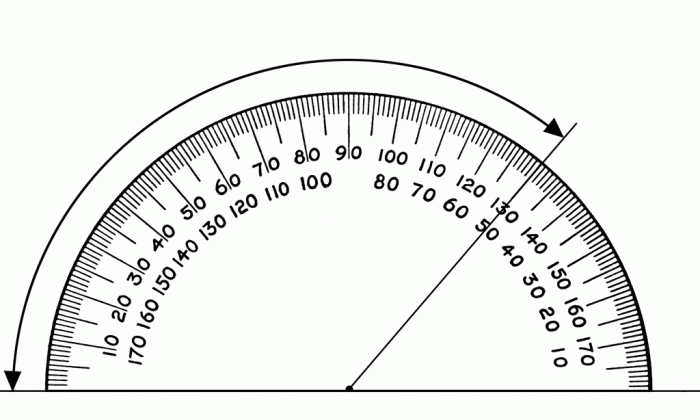
Resting prime rib after cooking is crucial for achieving a juicy and flavorful result. During the resting period, the internal temperature continues to rise slightly, allowing the juices to redistribute throughout the meat. This process ensures even cooking and prevents the meat from becoming dry.
Resting Prime Rib, Medium rare prime rib temperature
Resting prime rib after cooking is crucial for achieving a juicy and flavorful result. During the resting period, the internal temperature continues to rise slightly, allowing the juices to redistribute throughout the meat. This process ensures even cooking and prevents the meat from becoming dry.
The recommended resting time for a medium-rare prime rib is 15 to 20 minutes. This allows the internal temperature to stabilize and the juices to redistribute evenly.
Carving Medium-Rare Prime Rib
Carving medium-rare prime rib requires a sharp knife and a steady hand. The key is to make clean, even cuts to minimize waste and preserve the meat’s juices.
- Use a sharp knife:A sharp knife will cut through the meat cleanly and easily, minimizing the risk of tearing or shredding the meat.
- Cut against the grain:Cutting against the grain results in tender and manageable slices. The grain of the meat refers to the direction of the muscle fibers. When cutting against the grain, you are essentially slicing across these fibers, making the meat more tender.
- Start with the thickest part:Begin by cutting the thickest part of the roast, usually the center. This will help ensure that the thinner portions are not overcooked.
- Slice evenly:Aim for slices that are about 1/2 inch thick. This will allow the meat to cook evenly and provide a good balance of tenderness and flavor.
- Use a carving fork:A carving fork is helpful for holding the roast in place while you carve. This will help prevent the meat from slipping and make it easier to achieve clean cuts.
Serving Medium-Rare Prime Rib
Medium-rare prime rib is a versatile dish that can be served in a variety of ways. Here are some creative ideas for pairing it with different sauces, side dishes, and beverages:
Sauces
- Au Jus:A classic pairing for prime rib, au jus is a rich and flavorful broth made from the roast’s drippings.
- Horseradish Cream Sauce:This creamy sauce adds a tangy and spicy kick to the rich flavor of the prime rib.
- Red Wine Sauce:A rich and flavorful sauce made with red wine, shallots, and herbs.
- Mushroom Gravy:A hearty and savory sauce made with mushrooms, onions, and flour.
Side Dishes
- Roasted Vegetables:Roasted vegetables like asparagus, Brussels sprouts, and carrots complement the rich flavor of the prime rib.
- Mashed Potatoes:Creamy mashed potatoes are a classic pairing for prime rib, providing a comforting and satisfying side dish.
- Garlic Bread:Toasted garlic bread adds a flavorful and aromatic element to the meal.
- Green Bean Casserole:A classic holiday side dish that pairs well with the rich flavor of prime rib.
Beverages
- Red Wine:A full-bodied red wine like Cabernet Sauvignon or Merlot complements the rich flavor of the prime rib.
- Beer:A dark beer like stout or porter pairs well with the savory flavor of the roast.
- Sparkling Water:A refreshing and light beverage that helps cleanse the palate between bites.

